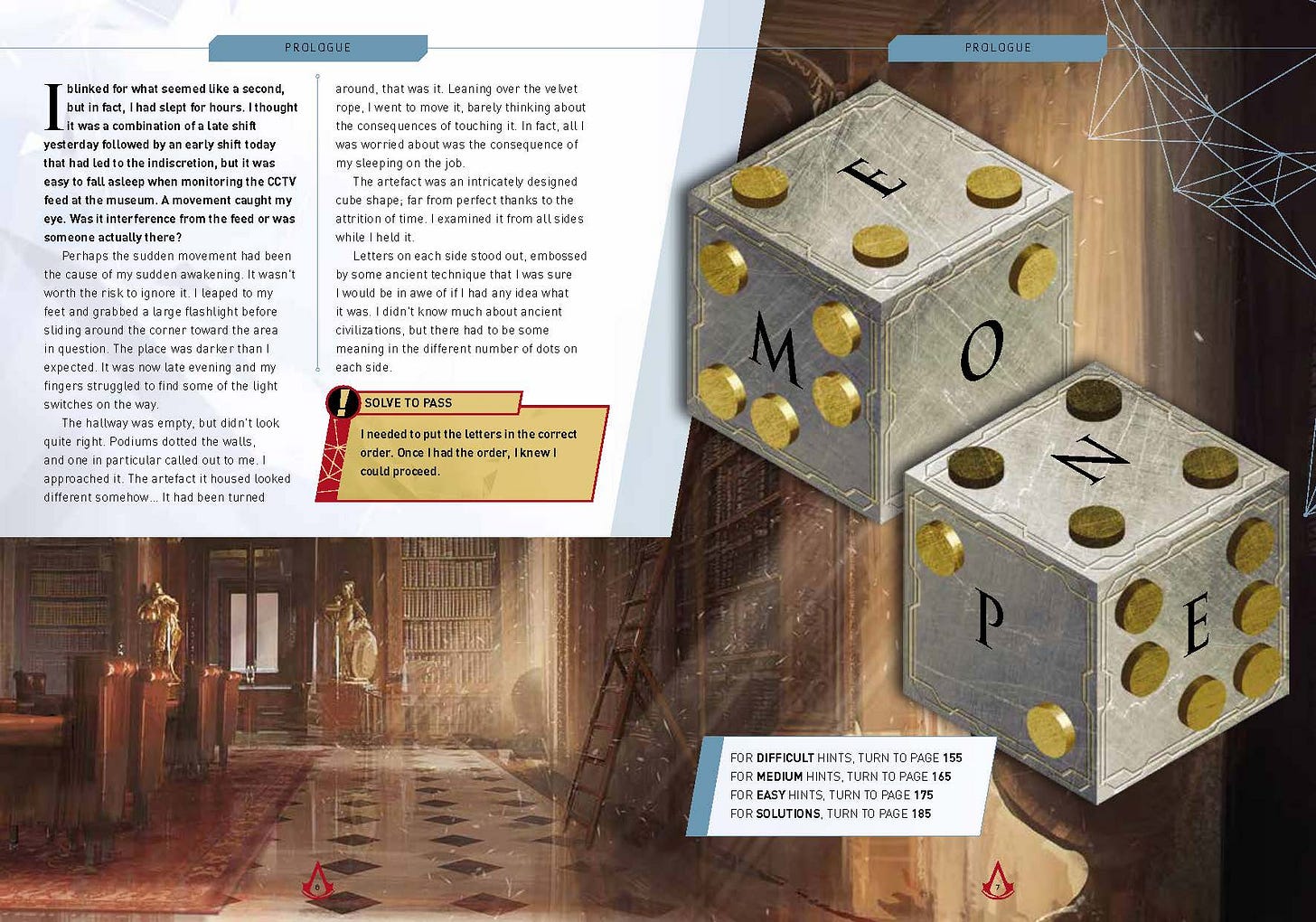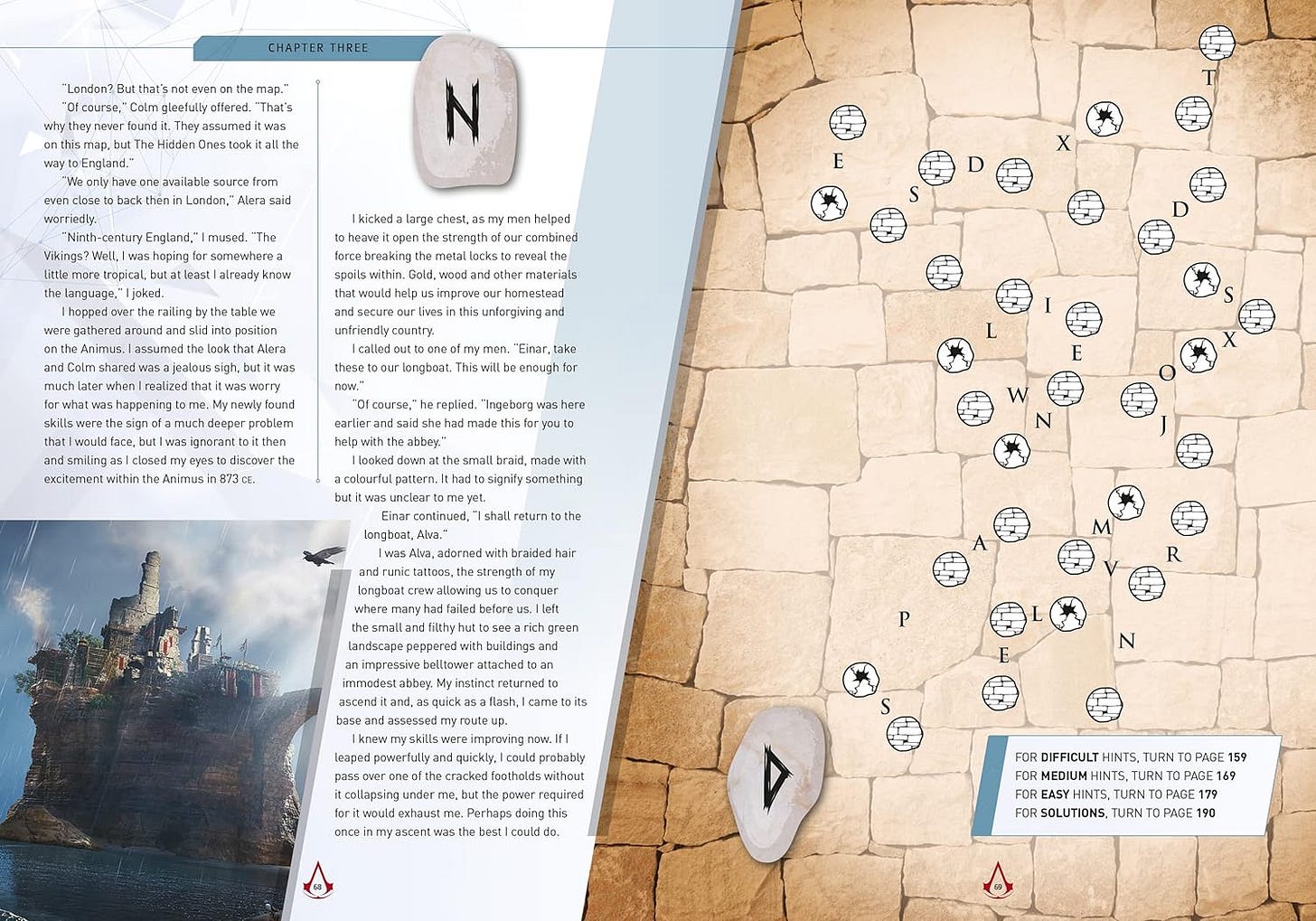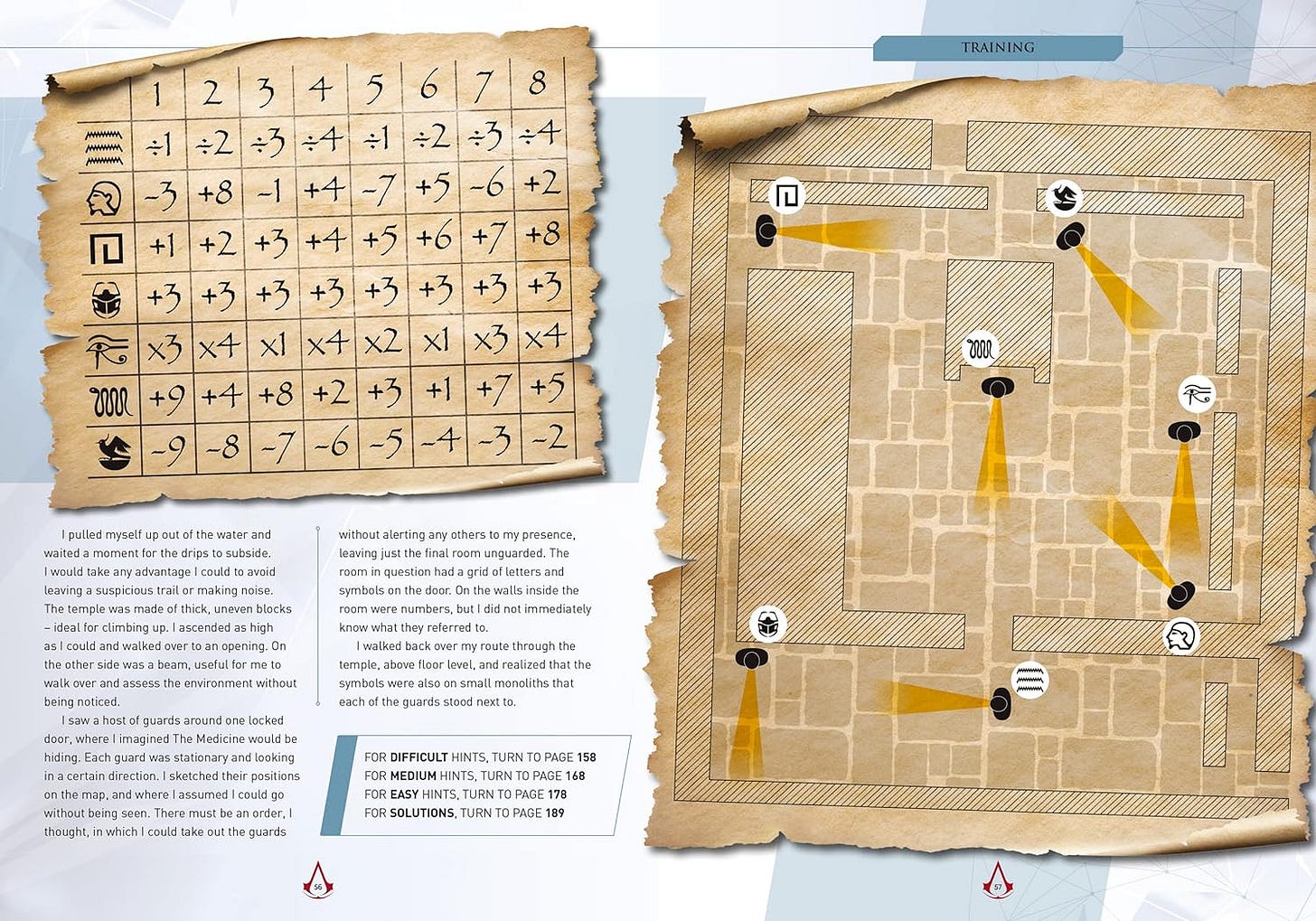So this came out of nowhere. This was one of those random bookstore finds that I just HAD to buy as soon as I saw it. The Assassin’s Creed Escape Room Puzzle Book (or simply “the book” from hereon out), is exactly what it says on the cover: a book of puzzles based on the popular Assassin’s Creed video game franchise.
“Escape room” is a bit of a misnomer, as there are no rooms to be escaped from, but it conveys the experience better than the term “variety puzzle book” might. The prevalence of “virtual escape rooms” and “escape rooms in a box” goes to show how versatile “escape room” has become as a marketing term. Personally, I think “narrative puzzle game” is a better name for this genre, but I don’t make those decisions.
Nonetheless, the book is a frankly stunning example of what I consider an emerging genre that manages to capture the spirit of the Assassin’s Creed franchise. It’s just a shame that it doesn’t stick the landing.
So What is This?
The book is an interesting take on the narrative “escape room” puzzle genre. Rather than a book of vaguely themed puzzles, the book is more like a novella with frequent puzzle breaks. This is not the first book of its kind either, as author James Hammer-Morton has written similar books, including one based on popular public domain puzzle-solver, Sherlock Holmes.
The story is about you, a blank-slate protagonist named Joey, who works as a night guard at a museum. One night, you (Joey) come across an intruder attempting to steal an artifact. The intruder escapes, but leaves the artifact: a cube with letters written on each face. This is the first puzzle of the game. At this point, a yellow box instructs you to stop reading until you solve the puzzle on the opposite page.
This is the pattern for the whole book: a short narrative, a setup, and then a thematically-appropriate puzzle. Rather than being rote word-searches or riddles, each puzzle is tailored to the situation described.
One of my favorite recurring puzzles involves tracing a path between nodes representing handholds in a wall. The correct path requires the nodes to be close together, and letters between the correct nodes will reveal a code word that will be used in later puzzles. This puzzle is both fun and a clever translation of the parkour climbing that defines Assassin’s Creed gameplay.
There are also logic puzzles to identify assassination targets, mazes full of guards that must be assassinated in the correct order, and “ancient writings” written in codes that must be deciphered.
The Good
Overall, I found the story and puzzles a fantastic translation of the Assassin’s Creed experience. There was a time when I loved the Assassin’s Creed series and was enamored with its lore.
The series, for those unfamiliar, involves an ages-long war between two secret societies: the Templars, who seek to control the world; and the Assassins, who try to maintain human freedom. The protagonists of the games are modern individuals who experience the lives of past assassins via a VR-like interface called the Animus.
The Assassins and Templars are constantly fighting over magical MacGuffins called “pieces of Eden” which are remnants of an ancient society that give humans great power. In the book, you (Joey) are a normal person, exploring the memories of assassins from throughout history, tracing the path of a particular piece of Eden as it trades hands over the millennia. Each chapter covers a different assassin from a different period of time, times that conveniently line up with those covered by the video games.
I found the book very accurate to the experience of the games. Everything from the shallow sci-fi plot, the historical backdrops, the sly cameos by famous historical figures, and just enough references to the protagonists of the games were more than enough to trigger my nostalgia. The book was an engaging, clever, and nostalgia-laden ride.
The Bad
The biggest flaw with the book is the editing. Not in the narrative portions, where it could be overlooked, but in the puzzles themselves. There are multiple places where a puzzle description is mislabeled or missing information. At least one puzzle is completely unsolvable (pg 81, the solution in the back of the book is correct, the actual text is not). Even my favorite puzzle, the recurring wall-climbing word-search, is inconsistent between iterations.
For a book of puzzles, this is an unforgivable sin. There was so much work put into the design of this book, it is disappointing that such an obvious flaw was overlooked and not corrected.
The Non-Binary
I loved the premise of this book, I loved the marriage of narrative and puzzle elements, I loved the nostalgia trip, and I loved how they translated the video games into an analog form. I sincerely hope we see more experiences like this. I am fascinated by the potential of narrative-driven puzzle games, and look forward to more innovations in this space. It’s just too bad that such a unique experience should be marred by such obvious and catastrophic flaws.
Next Week…
In recognition of the recent EEK3 showcase, I talk about the Haunted PS1 collective and the incredible lo-fi horror genre. See you then!











It's a shame the puzzles had so many errors, otherwise I'd run out and get the book now. Still might look into it since I enjoy experimental things, but the problems sound a little too frustrating. Reminds me of Murdle, basically the same blend of puzzles and prose.
I wonder what other games could work for this kind of format. Zelda seems somewhat obvious, basically anything with a notable puzzle element. Danganronpa would be cheating a little since it's already mostly a visual novel, but I'd gladly take actual hangman over Hangman's Gambit.
I liked Assassin's Creed Brotherhood, but the opening of III bored me out of the series, and it seems like the newer games may as well be in a different franchise. So I felt that 'used to be into Assassin's Creed' bit.